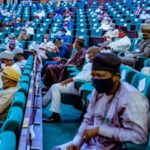In a landmark move aimed at transforming the nation’s educational landscape, the Federal Government announced today the abolition of the Junior Secondary School (JSS) and Senior Secondary School (SSS) tiers, replacing them with a compulsory 12-year uninterrupted basic education model. The decision, unveiled during the 2025 extraordinary National Council on Education (NCE) meeting, marks the end of the decades-old 6-3-3-4 system and introduces a streamlined 12-4 structure.
Key Features of the New System
- Uninterrupted Learning Until Age 16:
Under the new framework, students will receive 12 years of continuous basic education, eliminating the previous division between junior and senior secondary levels. This ensures learners complete their foundational education by age 16, aligning with international standards.
- Standardized National Curriculum:
The reform mandates a uniform curriculum across all states, integrating vocational and entrepreneurial skills early to prepare students for higher education or employment.
- Higher Education Entry Age:
The government seeks to set 16 years as the minimum age for tertiary institution admissions, a shift from the current practice.
Rationale Behind the Reform
Education Minister Dr. Tunji Alausa emphasized that the overhaul aligns Nigeria with global best practices, citing countries like the U.S. and Germany where 12-year basic education is standard. The policy aims to reduce dropout rates by removing financial and systemic barriers, particularly for disadvantaged students . Alausa highlighted that extended compulsory education would curb child labor and social vices linked to early school exits while equipping youth with skills for economic productivity.
Implementation Strategies
To ensure a smooth transition, the government outlined five pillars:
– Policy Reforms: Legal frameworks to institutionalize the 12-4 model.
– Infrastructure Expansion: Building new schools and upgrading existing facilities.
– Teacher Training: Recruiting and retraining educators for the updated curriculum.
– Funding and Partnerships: Collaborating with states and international partners.
– Curriculum Enhancement: Integrating technology and vocational training.
Mixed Reactions from Stakeholders
While education commissioners and development partners praised the reform’s vision, concerns linger over implementation challenges. Lagos State Education Commissioner Adeola Ogunlana acknowledged the potential for improved outcomes but stressed the need for “adequate funding and teacher preparedness” . Parent groups expressed surprise at the abrupt shift, with some questioning how existing school structures would adapt.
Contradictory Reports Surface
In a late development, Minister Alausa clarified that discussions are ongoing, stating, “JSS and SSS are not yet scrapped,” but confirmed the government is actively considering the model. This has sparked confusion, with critics urging transparency in the policy rollout.
A New Chapter for Nigerian Education
If successfully implemented, the 12-year system could revolutionize access to quality education, bridging urban-rural divides and fostering global competitiveness. As Dr. Alausa noted, “Educated youth are the bedrock of national development” . However, the road ahead hinges on collaboration between federal, state, and private stakeholders to turn this ambitious vision into reality.










Reading your work feels like stepping into a quiet space where everything makes sense, even the things that were once unclear.